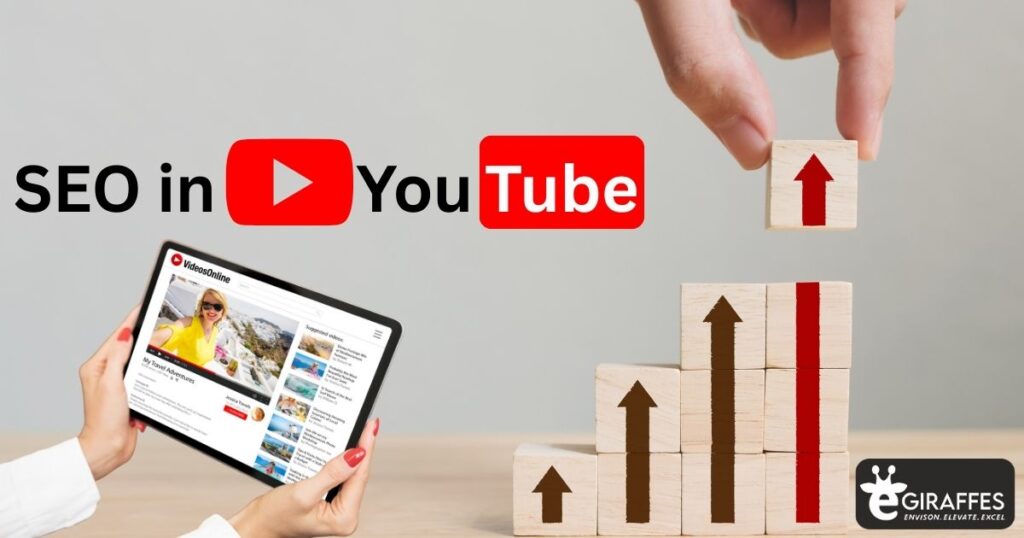Future Trends in SEO in YouTube and Video Rankings

YouTube has evolved far beyond its original identity as a video-sharing site. With over 2.7 billion monthly active users, it has firmly secured its place as the second-largest search engine in the world, right after Google. This massive shift means that SEO in YouTube is now a central focus for creators, businesses, and digital marketers seeking to maximize visibility and engagement.
But as YouTube’s ecosystem becomes more complex, traditional search engine optimization methods are no longer enough. Artificial intelligence (AI) and advanced algorithms are at the forefront of how video content is being ranked and recommended, shaping a new era of discoverability on the platform.
In this article, we’ll break down how SEO in YouTube is changing, the impact AI is having on video performance, and how content creators can adapt their strategies to remain competitive.
How SEO in YouTube Has Evolved
In the early years, success on YouTube was often determined by surface-level tactics—using exact-match keywords in titles, stuffing tags, and crafting long descriptions filled with repeated phrases. However, as user behavior grew more nuanced, so did the platform’s algorithms.
Today, SEO in YouTube goes well beyond metadata. It includes behavioral signals such as:
- Watch time
- Click-through rate (CTR)
- Session duration
- Audience retention
- Engagement metrics (likes, comments, shares)
The platform has essentially shifted from keyword-centric optimization to audience-focused content performance. This shift means that to rank well, creators must now produce videos that offer real value and hold attention.
The Role of AI in YouTube’s Search and Recommendation Systems
AI is no longer just a back-end tool—it is central to how YouTube functions. According to Google, over 70% of video views on YouTube come from AI-driven recommendations, not search.
Here’s how AI is transforming SEO in YouTube:
1. Personalized Recommendations
YouTube’s AI continuously analyzes user behavior—such as browsing patterns, likes and dislikes, watch history, and engagement with past videos—to deliver personalized suggestions. This dynamic personalization means creators need to make content that appeals not just to mass keywords, but to specific viewer interests.
2. Natural Language Processing (NLP)
Search algorithms now use NLP to understand the intent behind queries rather than relying solely on keyword matches. A search like “how to start a podcast” is interpreted based on context, user history, and relevance. Videos that address the topic in-depth—even if the exact words aren’t repeated multiple times—will rank higher.
3. Understanding Content Quality
AI can detect various quality markers such as high-resolution visuals, clear audio, consistent editing, and content clarity. YouTube favors creators who consistently deliver professional and viewer-friendly videos, reinforcing that quality plays a direct role in SEO in YouTube.
Key Algorithm Updates Every Creator Should Know
The YouTube algorithm isn’t static—it’s constantly learning and evolving. Below are some notable shifts that are affecting how videos are ranked today:
1. Engagement Signals Dominate
Watch time, audience retention, and meaningful interactions (like comments and shares) are now critical. The algorithm measures how long people stay, not just how many click. A well-optimized title may attract viewers, but if the content doesn’t deliver, your rankings will suffer.
2. Multi-Format Content Rewards
Shorts, live streams, and community posts are increasingly influencing visibility. To improve SEO in YouTube, creators are encouraged to use diverse content formats, as the algorithm prioritizes channels with active and varied engagement.
3. Topic Clusters and Authority Building
YouTube favors creators who establish expertise in specific topics. For instance, a channel consistently publishing videos about “digital marketing tools” builds authority over time. This makes it easier for new videos within that niche to rank higher—a concept borrowed from traditional SEO.
4. Real-Time Feedback and Testing
When a new video is uploaded, YouTube tests it on a small sample audience. If it performs well (i.e., high watch time, strong engagement), the video is pushed to broader viewers. This “test and scale” model makes early engagement a critical factor in ranking.
How to Improve SEO in YouTube in the AI Era
If you want your videos to reach a wider audience, you need to evolve your strategy. Below are actionable steps to align with the platform’s AI-driven SEO model:
1. Focus on Intent-Based Keywords
Use keyword research tools like TubeBuddy or vidIQ, but go deeper—understand what your audience is truly searching for. Instead of “fitness,” think “15-minute home workout for beginners.” Aligning content with specific user intent gives you an edge in discoverability.
2. Hook Viewers Early
Retention is everything. Aim to capture attention in the first 10 seconds of your video. Use strong intros, compelling visuals, or a quick summary of what viewers will learn. Keeping viewers engaged directly boosts SEO in YouTube rankings.
3. Leverage AI Tools for Production
From auto-generated subtitles to AI-powered editing tools, creators now have access to advanced software that helps improve video quality. These tools can help identify viewer drop-off points, suggest improvements, and increase content performance over time.
4. Build Niche Authority
Post consistently within a specific niche. This helps the algorithm understand your content and associate your channel with certain topics. Over time, you’ll be seen as a trusted source, improving your overall channel performance.
5. Use Metadata Strategically
While the algorithm is smarter, metadata still matters. Incorporate your main keyword (like SEO Agency in Pune) into your title, description, and tags—but naturally. Avoid stuffing. Instead, focus on creating clear, informative descriptions that match what users are looking for.
Future Trends in SEO in YouTube
Here are a few emerging trends that creators should keep an eye on:
Voice Search Optimization
As more people use voice assistants and mobile voice search, optimizing for conversational phrases will become essential. Phrases like “what’s the best camera for vlogging in 2025?” are more likely to be spoken than typed.
AI-Generated Video Summaries
YouTube is already testing automatic video chapters and transcripts. In the future, AI-generated summaries could become a significant factor in how your content is indexed and ranked.
External Signals Matter More
Just like Google search considers backlinks, YouTube’s algorithm may increasingly factor in external engagement, such as social shares, embedded links, or even Reddit discussions about your content.
Channel Reputation and Authority
The algorithm is starting to weigh channel-level signals—not just individual video metrics. Channels with high engagement, consistent uploads, and strong community interaction will likely benefit from better visibility across the platform.
Final Thoughts
The future of SEO in YouTube is being reshaped by AI and algorithmic innovation. Gone are the days when simply inserting a few keywords could get you to the top of search results. Now, the focus is on delivering content that meets user expectations, aligns with viewer intent, and engages audiences in meaningful ways.
Creators who embrace these changes—by producing high-quality, consistent, and intent-driven content—will be best positioned to thrive. Whether you’re a new YouTuber or an established brand, now is the time to align your strategy with how the platform is truly evolving.
In short, SEO in YouTube is no longer just about being found—it’s about being valuable. Stay smart, stay consistent, and let your content speak directly to the people who need it most.



